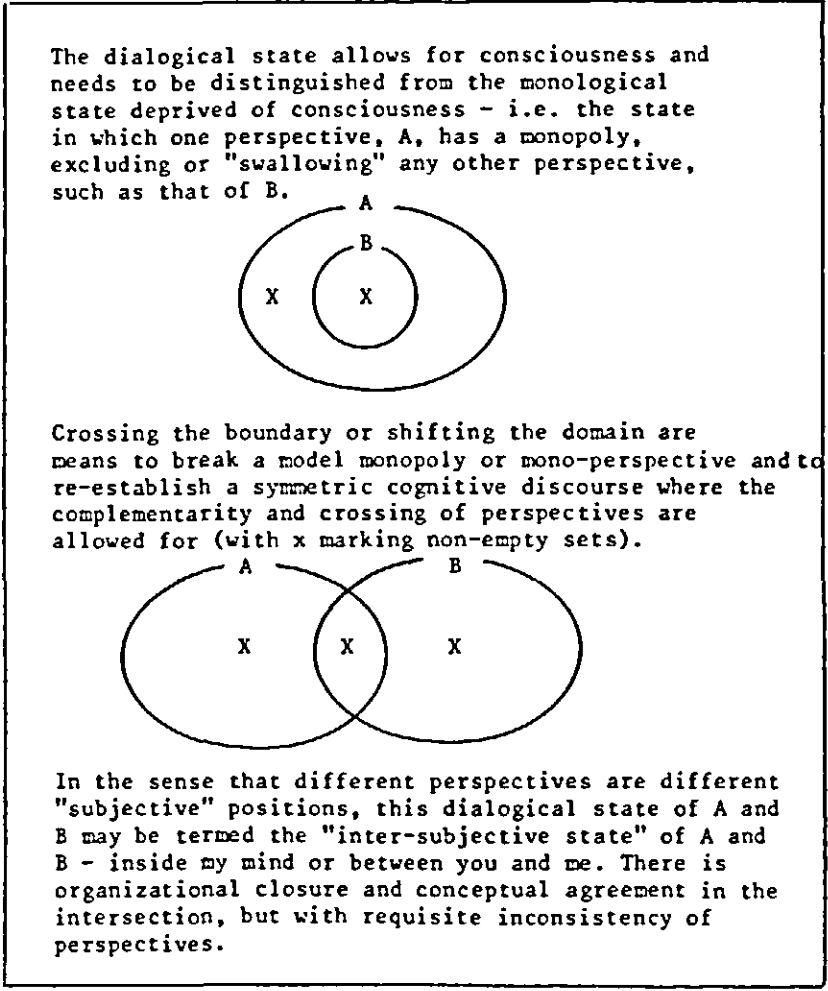allows for consciousness and needs to be distinguished from the Monological State deprived of consciousness – i.e. the state in which one perspective, A, has a nonopoly, excluding or "swallowing" any other perspective, such as that of B.

Figure 1. From monological state to dialogical state.
Crossing the boundary or shifting the domain are means to break a model monopoly or mono-perspective and re-establish a symmetric cognitive discourse where the complementarity and crossing of perspectives are allowed for (with x marking non-empty sets).
In the sense that different perspectives are different "subjective’’ positions, this dialogical state of A and B may be termed the "inter-subjective state" of A and B – inside my mind or between you and me. There is organizational closure and conceptual agreement in the intersection, but with requisite inconsistency of perspectives.
The ideal-type dialogical state illustrated in the lower part of Figure 1 is obviously not ideal for all phases of management and Decision-making. It applies to preparatory and post-implementation phases when action alternatives and alternative sources of information are evaluated. To make a decision literally means to cut through, and once the decision has finally been made, its Implementation requires that any rival perspective be put in parentheses.
~
BRÅTEN, Stein, 1984. The Third Position—beyond Artificial and Autopoietic Reduction. Kybernetes. 1 January 1984. Vol. 13, no. 3, p. 157–163. doi ![]() , page
, page ![]() , page
, page ![]()
Note: Agile ensures that these (short!) phases alternate regularly.